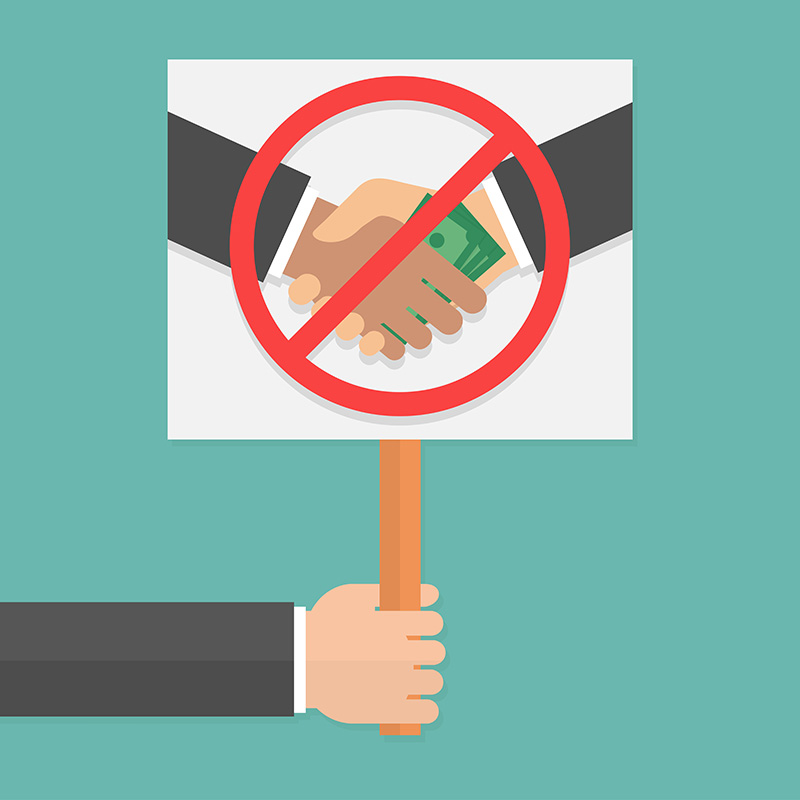Five tips for staying on top of your human rights obligations
Wed 10 Aug 2016
Corporate respect for human rights is a critical part of any business’s success and future prosperity. It’s not only about brand protection, it’s also about brand enhancement. But in a complicated environment, what steps can you take to ensure your company is complying with its human rights responsibilities?
1. Set the right tone at the top
A high-profile study by Goldman Sachs (detailed in Robert Eccles’ One Report: Integrated Reporting for a Sustainable Strategy) found that companies with sustainability and respect for human rights embedded into their business models outperformed the MSCI World index by 18 per cent.
By making human rights a core aspect of a company’s operations from the top down, effective management teams demonstrate that they understand the wider risks to the business and markets in which they operate.
Leading by example has always been key to motivating a group of people to behave in a particular way. If management don’t overtly show how respect for human rights is an important cultural norm across the whole business, they can’t expect others in the business to behave responsibly either.
2. Identify salient risks
Which activities of your business – or your supply chain – could pose the greatest risk to people?
To address this simple question, you don’t only look for risks to the business; your starting point should be a thorough search for any possible risks to people. Only by starting with a people-first approach will you ensure all your risks are covered.
In the mining industry, for example, the obvious risks might be health and safety (workers getting injured), and community and environmental impact (putting waste back into rivers), but a less obvious risk could be the use of local military trained security who may pose the greatest risk to people. In the agricultural industry in Africa, a salient risk might be child labour, while a less obvious risk might be the possible abuse of workers transporting the product.
These salient areas where human rights are most at risk are the same areas that, if neglected, could have an enormously negative impact on your business.
Look, for example, at the sweatshop controversy that surrounded Nike in the nineties, or the concerns about health and safety and the exploitation of migrant workers that have been reported during the construction of stadia in Qatar for the 2022 World Cup.
3. Understand your supply chain
Many companies do not know – or pay attention to – how the first tier of their supply chain behaves, let alone the second or third tiers.
But under the Modern Slavery Act, businesses are required to report on the steps they are taking to ensure that both their own business, and their supply chain, does not involve slavery, forced labour or human trafficking.
Often, it is the lower tiers that are central to any human rights impact assessment. They are most likely to be the cause of a company unwittingly becoming linked to human rights abuses, so if organisations want to truly protect their brands, they must be vigilant and be seen to be vigilant.
Larger companies should look to their internal auditors to map and monitor their organisation’s supply chain, looking for particular areas where risk is posed to individuals. Smaller companies have an equal responsibility to do this; however, the resources available are likely to be proportionate to the value of their brands and reputation, so it may not be as great a priority.
4. Develop an effective monitoring programme
As with any successful implementation, organisations need policies and processes in place in order to manage their human rights performance. Furthermore, they need to ensure those policies are effective.
The question for the main board is: how do we know our human rights related processes are working in practice? For your supply chain, at all levels, do you conduct spot checks? It’s not good enough nowadays to let companies self-assess and tell you everything is okay, particularly if it is in an industry or jurisdiction that is viewed as high risk. This is where a good internal auditor shines, as they will be able to focus their work on the high-risk areas.
In your own organisation, ensure you provide appropriate training both for your own employees and your higher-risk suppliers. If you don’t have the capability to do so, use external experts. It’s vital you have advisors who are able to combine internal audit experience with human rights expertise.
5. Tell stakeholders what you are doing
When it comes to authoritative guidance for businesses to respect human rights, there is only one place to look: the United Nations Guiding Principles on Business and Human Rights.
Its fundamental ethos of “know and show” outlines how organisations first need to understand where they pose the greatest risk to people, introduce management systems to mitigate those risks (by engagement and monitoring), and finally, set out to their stakeholders any adverse impacts that have arisen, what they are doing to help prevent impacts arising in the future – and why.
Occasionally, organisations will explain this by producing a separate human rights report. More often, they will include a section on their human rights activity within their sustainability or strategic report.
These reports cannot just be marketing spin, however, as today’s savvy stakeholders will immediately see through it. Businesses need to tell their story in a fair and balanced way. Where organisations are objective, even critical, about their own performance, it makes the rest of their reporting so much more credible.
This article originally appeared in Audit & Risk, Insights from the Chartered Institute of Internal Audit, 1 August 2016. auditandrisk.org.uk





